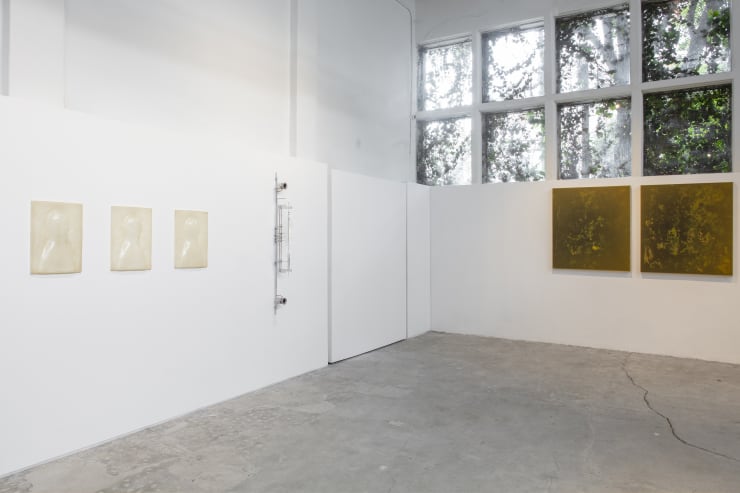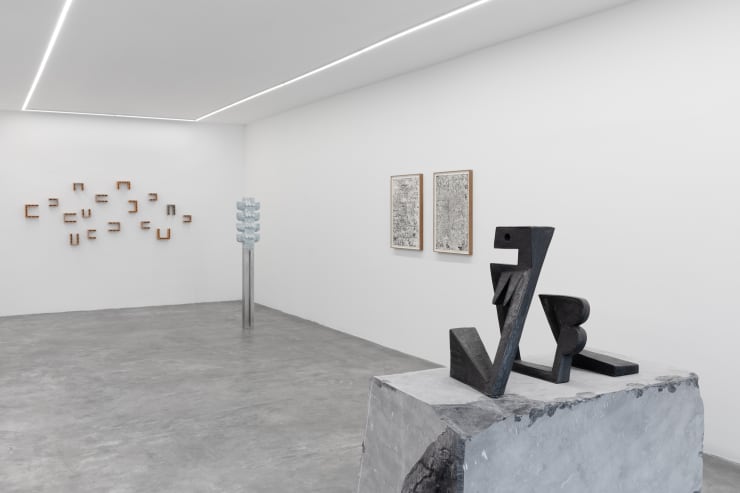-

El desierto de ella; Alicia, Chantal, Eunice
Manuela de Laborde, curated by Margaux Knight 17 Jul - 20 Sep 2025PEANA is pleased to announce El desierto de ella; Alicia, Chantal, Eunice , an exhibition by Manuela de Laborade curated by Margaux Knight. A tactile, embodied journey where materials such...Read more -

Retrato de un Artista / Portrait of an Artist
Adrián S. Bará, Ana Mazzei, ASMA, Carlos H. Matos, Manuela de Laborde x Luis Orozco Madero, Manuela García, Lucas Cantú, Rodrigo Hernández, Ximena Garrido-Lecca 24 Sep - 14 Nov 2022PEANA is pleased to announce Retrato de un Artista / Portrait of an Artist , the first exhibition in our new space in Mexico City with the participation of Adrián...Read more -

El duelo de una espina dorsal
Manuela de Laborde 12 - 27 Feb 2022PEANA is pleased to present El duelo de una espina dorsal, An exhibition and film by Manuela de Laborde, at Jardín 17 Casa Barragán curated by José Esparza Chong Cuy.Read more
This exhibition will be open to the public from February 9th to February 27th. The opening reception will be celebrated on February 12th from 13 to 16 hrs at Jardín 17 Casa Barragán.
Some cuts are so subtle that they are almost imperceptible. Others are so marked that they distort everything. The cuts that shape a story sometimes appear to be definitive, like moments or breaks that dictate a linear trajectory. But there are times when a spine cuts in such a way that it reorganizes the order and changes the interpretation of what happened.
The backbone of this exhibition is Cinema. An ideal cinema where film and its fiction stop and expand to think about its cuts, understand its form, and question its image. In this cinema, movements become objects, images fold are cut, and thoughts are enunciated as a stream of consciousness that flows by its own inertia.
Through an essay film titled The backbone of loss and other objects that emerge from it, Manuela de Laborde, filmmaker and visual artist, seeks to give shape to narrative. Like a chiropractor twisting a back to adjust the energies of a body, The backbone of loss twists and reorganizes the linearity of her fiction to make her own SSSinema.
In Manuela’s extended SSSinema memories chase gestures that were once warm. There is no projection, screen, seats, or corners. It’s a concave place, like the eye, that makes everything part of it—even dreams. Within this SSSinema there are personal reflections that only make sense there, such as the invisible nod to Henri Rousseau’s The Snake Charmer, which early on inspired many of the ideas behind this exhibition. Manuela interprets Rousseau’s painting as a metaphor of an inverted cinema’s theater: the moon being the projector, the charmer and her snakes are everything that exists outside the screen, and the wild surroundings are the representation of what would normally be within the screen.
El duelo de una espina dorsal explores the impossibility of capturing the totality of a story in an image, or in an object, or in anything. Following the expansive tradition that once led some weaving departments to become mixed media departments, Manuela weaves palm and film, to continue expanding her understanding of cinema, its narrative, and the creation-myth.
José Esparza Chong Cuy -

The memory we don’t recall
Héctor Zamora, Roger White, Tezontle, Jorge Satorre, SANGREE, Pedro Reyes, Gala Porras-Kim, Jerónimo Elespe, Manuela de Laborde, Tomás Díaz Cedeño, Wendy Cabrera Rubio, ASMA 21 Nov - 23 Dec 2021PEANA and LABOR are pleased to announce the exhibition The Memory We Don’t Recall , a group show of Héctor Zamora, Roger White, Tezontle, Jorge Satorre, SANGREE, Pedro Reyes, Gala...Read more -

Second Life
Leonor Antunes, Francisco Artigas, ASMA, Dr. Atl, Manuela de Laborde, Frida Escobedo, Claudia Fernández y Proyecto Meteoro, Mario García Torres, Ernesto Gómez Gallardo, Jill Magid, Esther McCoy, Carlos Mérida, Mario Navarro, Juan O’Gorman, Clara Porset, P 28 Sep - 6 Oct 2019PEANA is pleased to anounce Second Life , a group exhibition presenting works by Leonor Antunes, Francisco Artigas, ASMA, Dr. Atl, Manuela de Laborde, Frida Escobedo, Claudia Fernández y Proyecto...Read more




